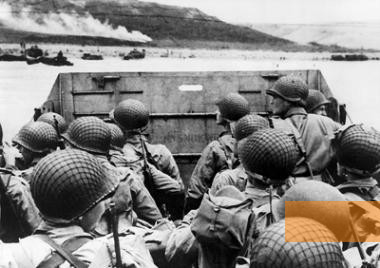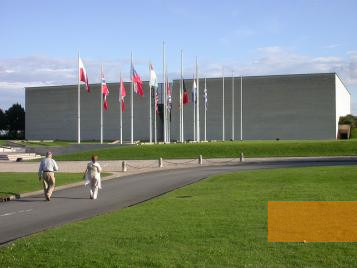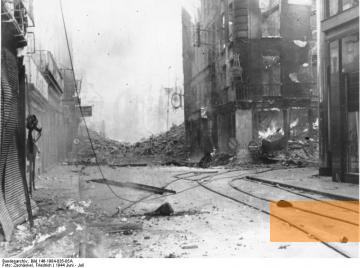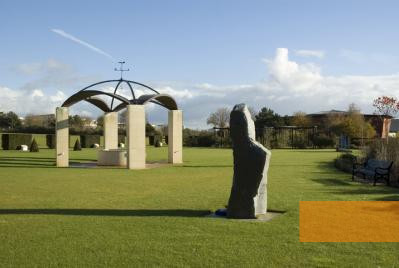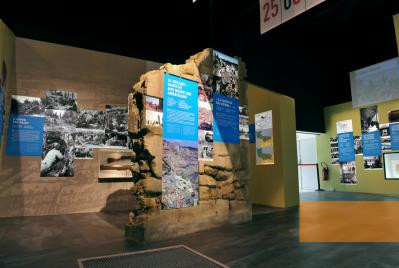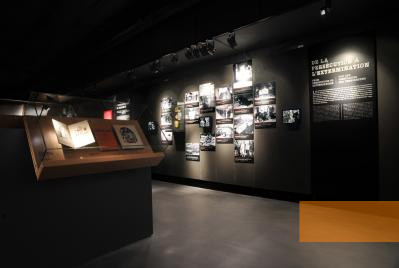The »Le Mémorial de Caen« memorial site, opened in 1988, commemorates the Allied landing in Normandy on June 6, 1944. The memorial focuses on the history of the 20th century as an age of violence.
In June 1940, the German Wehrmacht forced the French army to surrender; as a result, the north of France came under German occupation, and from 1942 on, Southern France too was occupied. In May 1943, U.S. President Franklin D. Roosevelt and British Prime Minister Winston Churchill agreed to invade France in the spring of the following year. The enemy - National Socialist Germany - was to be weakened and defeated by launching a second front in Western Europe. On June 6, 1944, American, British, French, Canadian and Polish soldiers landed on the coast of Normandy in a large-scale operation codenamed »Operation Overlord« and managed to secure the beachheads. The city of Caen was reached already on the first day of the invasion, yet the battle for its liberation lasted until mid-July. In that time much of the city was devastated.
Apart from the Allied landing in June 1944, the exhibition at the memorial also deals with the causes and effects of World War II.
Tens of thousands of soldiers died in action on both sides during the invasion of Normandy. About 20,000 civilians died in the fighting.
Tens of thousands of soldiers died in action on both sides during the invasion of Normandy. About 20,000 civilians died in the fighting.
It was the mayor of Caen, Jean-Marie Girault, who initiated the establishment of the memorial. It was opened in 1988 by French President François Mitterrand. The massive concrete façade was designed by architect Jacques Millet. It symbolises the Atlantic Wall set up by the German occupying forces against an invasion from the sea. The black mirrored entrance area on the other hand symbolises the breach which the Allies were able to make in that wall by landing in Normandy.
The memorial is one of the most visited French museums outside of Paris. It contains exhibition space for both a permanent exhibition (5,600 sq. m.) and temporary exhibitions. It is run as a joint-stock company, with mixed private and public ownership; the city of Caen holds a majority share of 51.5 percent.
The memorial is dedicated to promoting reconciliation and peace education. Part of the exhibition concentrates on the history of the deportations and genocide during World War II. New rooms on the history of the Cold War were opened in 2002.
The memorial is one of the most visited French museums outside of Paris. It contains exhibition space for both a permanent exhibition (5,600 sq. m.) and temporary exhibitions. It is run as a joint-stock company, with mixed private and public ownership; the city of Caen holds a majority share of 51.5 percent.
The memorial is dedicated to promoting reconciliation and peace education. Part of the exhibition concentrates on the history of the deportations and genocide during World War II. New rooms on the history of the Cold War were opened in 2002.
- Name
- Le Mémorial de Caen
- Address
-
Esplanade Eisenhower
14050 Caen - Phone
- +33 (0)231 060 645
- Fax
- +33 (0)231 060 166
- Web
- http://www.memorial-caen.fr
- resa@memorial-caen.fr
- Open
- Opening times vary according to the season:
February to November 9 a.m. to 7 p.m., shorter opening times and closed days during the winter - Possibilities
- Permanent and temporary exhibitions, media library, archive, educational programme, guided excursions to the landing beaches


